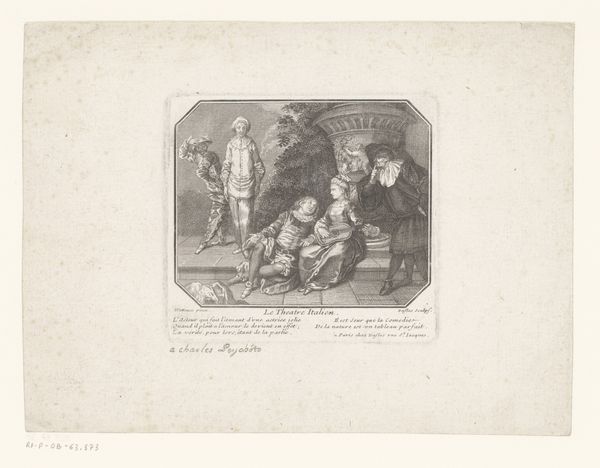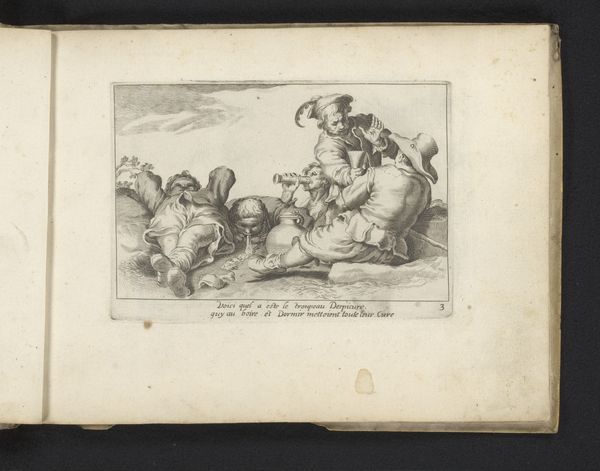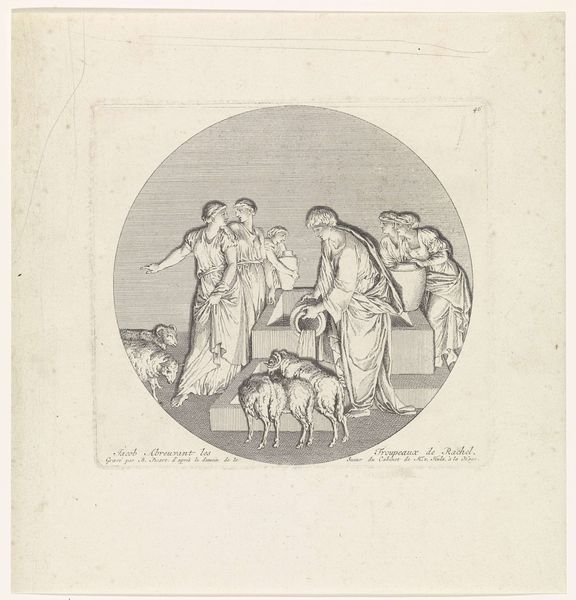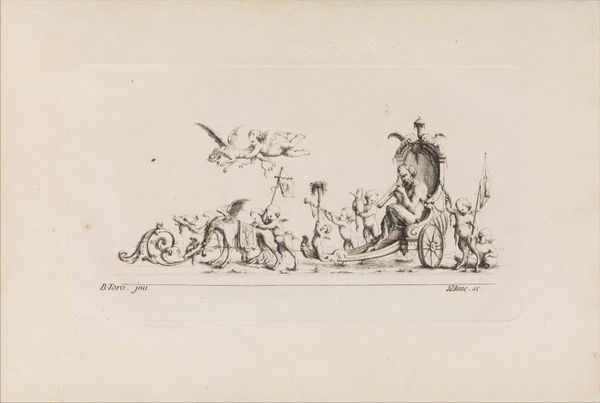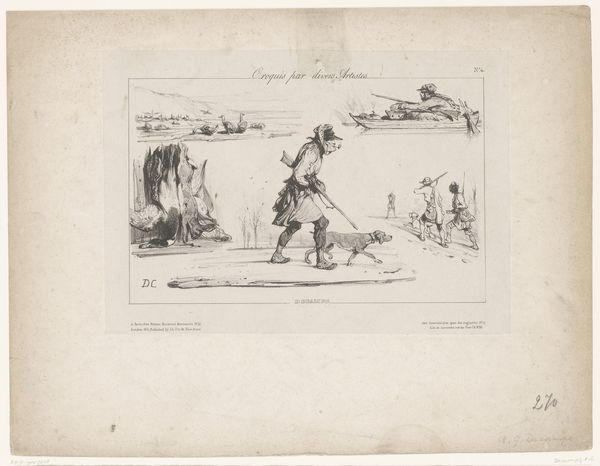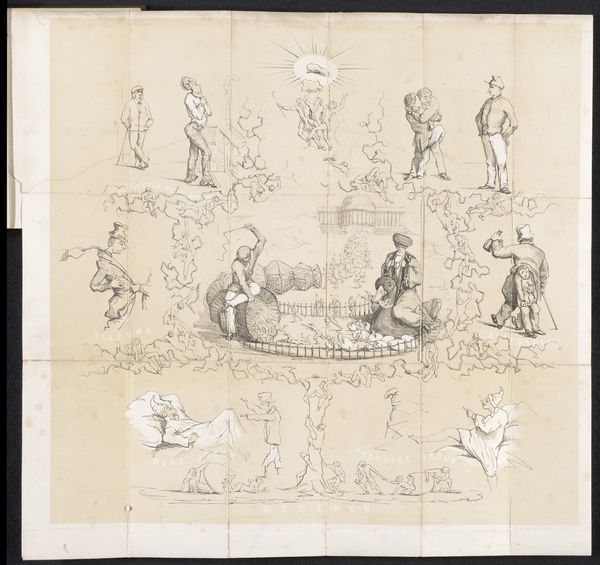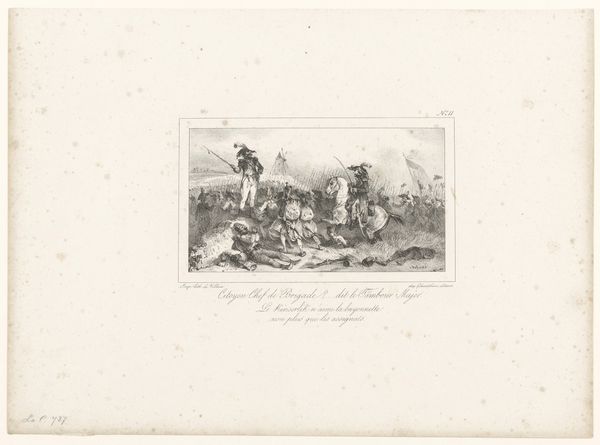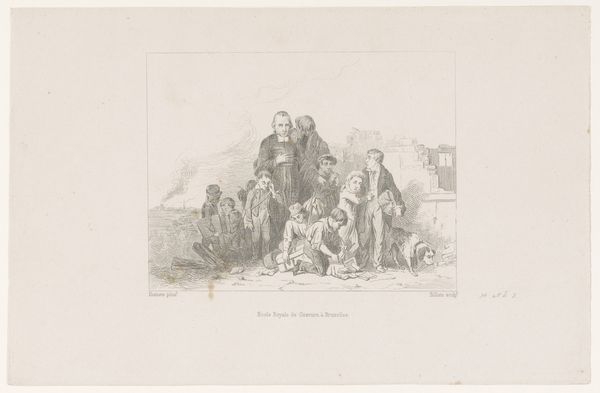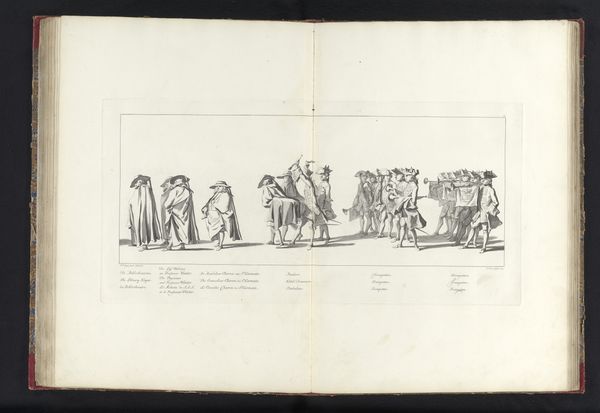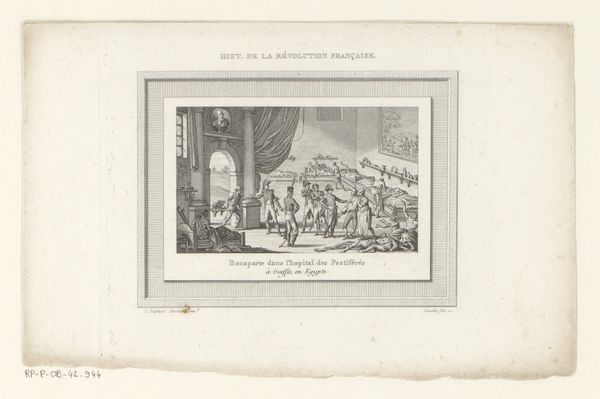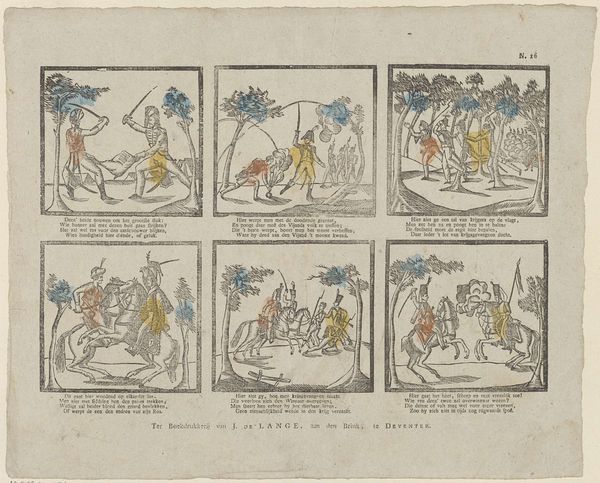
print, etching, engraving
# print
#
etching
#
classical-realism
#
genre-painting
#
history-painting
#
academic-art
#
engraving
Dimensions: height 115 mm, width 180 mm
Copyright: Rijks Museum: Open Domain
Editor: This is a reproduction of an etching called "Sea Creatures" by Lafage Jn and Vermeulen, made in 1861. It reminds me of a frieze, almost like it’s telling a story. The figures seem to be emerging from the water, full of classical symbolism and, honestly, it makes me a bit seasick! What strikes you most about this piece? Curator: Seasick, you say? Maybe it’s the endless watery undulation, the way everything flows and merges...almost uncontrollably, like the subconscious itself giving birth to all manner of forms. For me, this is high drama, a baroque vision bursting forth. I think what grabs me is how this little scene manages to compress all that classical mythological energy into such a tight, monochromatic package. Aren’t you curious about who those figures are supposed to represent? Do you recognize anyone? Editor: It looks like Venus in the centre? It's probably a classical story. Why make a reproduction, though? What purpose did it serve in 1861? Curator: Good eye! Spotting Venus at the centre... the Roman goddess born from the foam and wave. In the 19th century, reproducing such scenes had didactic value. This was probably a popular way for the masses to experience a narrative, like having your own pocket sized history lesson through art. These were less about original artistic statement and more about accessibility – a democratization of art, of sorts. You could call it art on demand... only the dial-up was a bit slower. Editor: Art on demand, I like that! So it's about bringing grand narratives to a wider audience through affordable means. Something to consider: what narratives and messages we reproduce today... and why! Curator: Exactly. Every print is a portal. Next time you see an etching, wonder: whose story is being told... and why did *they* think *you* needed to hear it? Food for thought!
Comments
No comments
Be the first to comment and join the conversation on the ultimate creative platform.
